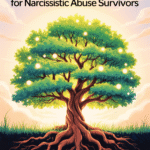Now Reading: Gaslighting vs. Disagreement: How to Tell the Difference?
- 01
Gaslighting vs. Disagreement: How to Tell the Difference?

Gaslighting vs. Disagreement: How to Tell the Difference?
Ever Left a Conversation Feeling Like You’re Losing Your Grip on Reality?
One moment, you’re sure you’re recalling events correctly—then suddenly, you’re questioning your own memory. Is it a harmless disagreement, or are you facing gaslighting?
💥 “Am I overreacting?”
💥 “Did it really happen that way?”
💥 “Maybe I’m just too sensitive…”
🚨 If you walk away confused every time, you may be dealing with gaslighting. 🚨
What Is Gaslighting, Really?
Gaslighting is a covert form of psychological manipulation where one person distorts facts, denies evidence, or rewrites history to make the other person question their own reality.
✨ Origin of the Term:
From the 1938 play “Gas Light,” in which a husband dims the gas lamps and insists his wife is imagining the flickering lights—driving her to doubt her sanity.
Healthy Disagreement vs. Gaslighting
Healthy Disagreement
- Goal: Understanding, compromise, or respectful co-existence.
- Tone: Constructive, even if strong opinions are expressed.
- Outcome: You may not agree, but no one leaves feeling crazy or invalidated.
Gaslighting
- Goal: Control your perception and maintain power.
- Tone: Deceptive, belittling, and dismissive of your concerns.
- Outcome: You walk away second-guessing yourself, your memory, and your worth.
Common Gaslighting Tactics
- Denial of Facts:
- “You’re imagining things—I never said that!”
- Blame-Shifting:
- “This is all your fault. You made me act this way!”
- Trivializing Feelings:
- “You’re too sensitive. It was just a joke!”
- Diverting Attention:
- “Stop focusing on the past—move on already.”
- “Everyone Thinks So”:
- “Everyone agrees with me. You’re the only one who sees it differently.”
Why People Gaslight
- Control & Power: Undermining your reality = keeping you dependent on them.
- Avoiding Accountability: If you’re too busy doubting yourself, you won’t question their actions.
- Projection: They accuse you of things they themselves are doing to divert blame.
Statistic: 85% of individuals who reported psychological manipulation in relationships identified gaslighting as a primary tactic (Harvard Psychological Review, 2021).
Real-Life Examples
1. Romantic Partner
💔 Scenario: You bring up something hurtful they said last week. They reply:
- “I never said that. You’re making things up. Are you okay?”
💥 Effect: You feel confused and ashamed—as if your memory can’t be trusted.
2. Family Member
🧩 Scenario: A parent or sibling claims they never promised to do something important for you.
- “I would never say that. Maybe you’re stressed.”
💥 Effect: You wonder, “Am I too sensitive? Did I fabricate that conversation?”
3. Boss/Manager
💼 Scenario: You follow their instructions exactly, but they deny ever giving them, making you look incompetent.
- “Why didn’t you ask me first? You’re misunderstanding everything.”
💥 Effect: You start documenting every conversation, yet still feel anxious and off-balance.
4. Co-worker
👥 Scenario: A colleague shares an idea in a meeting, then later accuses you of stealing it—or claims you misunderstood the entire plan.
- “You twisted my words. Everyone else is on the same page but you.”
💥 Effect: You feel isolated and doubt your professional judgment.
Psychological & Emotional Toll
- Elevated Cortisol Levels → Chronic stress, anxiety, potential health issues (Mayo Clinic, 2020).
- Cognitive Dissonance → Holding two conflicting beliefs: “I trust my memory” vs. “I’m apparently wrong every time.”
- Isolation → Gaslighters often discourage you from talking to friends or family who could offer clarity.
Gaslighting vs. Regular Conflict: How to Know?
- Self-Doubt: Normal disagreements might leave you annoyed or upset, but not consistently questioning your reality.
- Repeated Patterns: If you’re always made to feel “crazy” or “too sensitive,” it’s more than just a clash of personalities.
- No Resolution: In healthy disagreement, you can often reach some form of mutual understanding. With gaslighting, the goalpost keeps moving—you never feel closure.
Apply the IMC Method™
1. Identify
- Recognize red flags like denial, rewriting history, or playing victim.
- Keep written records (e.g., emails, text messages) when possible.
2. Minimize
- Reduce emotional engagement—don’t argue endlessly trying to “prove” reality.
- Seek outside validation from trusted friends, therapists, or colleagues.
3. Control
- Set firm boundaries: “I won’t continue this conversation if facts are being denied.”
- Consider low or no contact if the gaslighting persists and you’re suffering emotional harm.
Key Takeaways
- Gaslighting goes beyond a simple argument—its aim is to undermine your confidence and control your perspective.
- If you constantly feel crazy or overly emotional, you might be facing repeated gaslighting, not healthy conflict.
- The IMC Method™ provides a roadmap—spot the manipulations, distance yourself emotionally, and regain your sense of control.
- Support is crucial—reach out to friends, family, or mental health professionals.
Final Word
Gaslighting thrives on confusion and self-doubt. Educating yourself on these tactics is the first step toward reclaiming your clarity. Remember: You’re not overreacting—your reality matters. Stay informed, stay empowered, and don’t hesitate to seek help if you feel trapped in a web of manipulation.
🚀 Take your next step:
You deserve to trust your own mind—don’t let anyone steal that away from you. Tired of the Narcissistic Mind Games? Get the Tools to Break Free.















